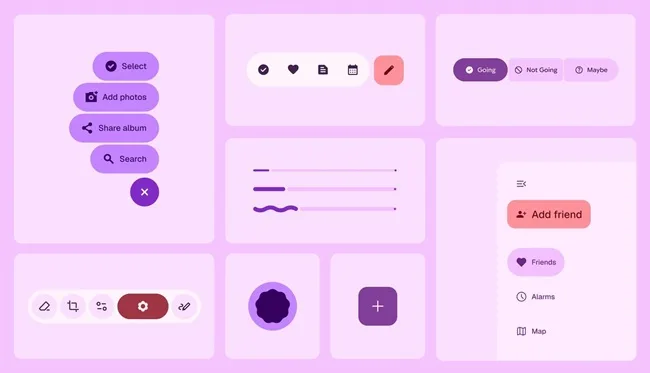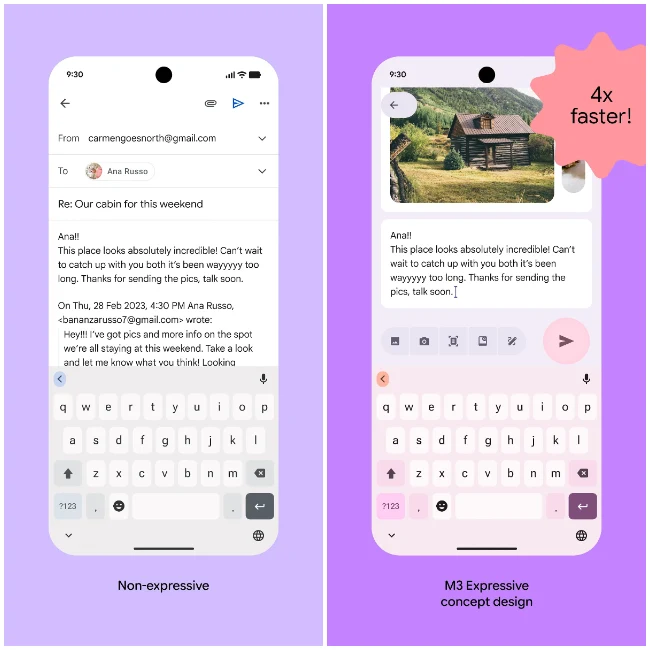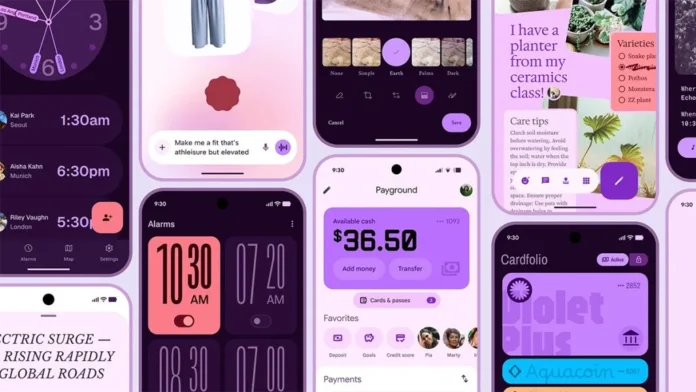As the tech world eagerly anticipates Google I/O 2025, one of the most exciting reveals is Material 3 Expressive – the latest evolution in Google’s Android design system. This new design language promises to revolutionize the way users interact with their devices by combining aesthetic appeal with emotional intelligence and usability.
Understanding Material 3 Expressive
Material 3 Expressive is the newest version of Google’s Material Design framework, which has been the foundation of Android’s user interface for years. Unlike previous iterations that focused mainly on visual consistency and functionality, Material 3 Expressive aims to create a more meaningful and emotionally engaging experience for users.
This design update emphasizes five key aspects: color, shape, size, motion, and containment. These elements work together to guide users’ attention to important features, group related content effectively, and make navigation more intuitive and enjoyable.

The Extensive Research Behind the Design
What sets Material 3 Expressive apart is the extensive research Google invested in its development. The company conducted 46 different studies involving over 18,000 participants globally. These studies included advanced techniques such as eye-tracking to understand where users naturally focus, sentiment analysis to measure emotional responses, and usability testing to evaluate how quickly users can interpret and interact with design elements.
The results are impressive: users can identify and engage with key interface components up to four times faster compared to previous design versions. Additionally, the new design fosters a stronger emotional connection, making apps feel more modern, approachable, and user-friendly.
Features of Material 3 Expressive: In-Depth Breakdown
1. Emotion-Driven Visual Design
Material 3 Expressive focuses on creating interfaces that evoke positive emotions by using vibrant colors, distinctive shapes, and smooth animations. This emotional approach helps users feel more connected to their devices, making interactions more enjoyable and memorable.
2. Faster Interaction and Enhanced Usability
Through extensive user research, including eye-tracking studies, Google discovered that users can find important buttons and controls up to four times faster with Material 3 Expressive compared to previous designs. This speed boost leads to quicker task completion and a more fluid user experience.
3. Accessibility Designed for Everyone
Material 3 Expressive prioritizes inclusivity by making interfaces easier to use for people of all ages and abilities. For instance, older adults can identify key interactive elements just as quickly as younger users, thanks to larger touch targets and clearer visual cues. The design also supports users with limited mobility or vision challenges by emphasizing contrast and spacing.
4. Core Design Principles: Color, Shape, Size, Motion, and Grouping
The update leverages five fundamental design aspects to improve clarity and appeal:
- Color: Uses bold, meaningful hues to direct attention and express brand identity.
- Shape: Incorporates varied and expressive forms to establish hierarchy and interest.
- Size: Enlarges critical buttons and icons to make them easier to find and tap.
- Motion: Applies purposeful animations that provide feedback and guide users smoothly.
- Grouping: Organizes related elements into clear sections to reduce mental effort and improve scanning.
5. Emphasis on Key Actions

Material 3 Expressive highlights the most important actions by making them visually prominent through size, color contrast, and strategic placement. For example, a “Send” button positioned near the keyboard and enlarged can be located up to four times faster than a small icon hidden in a toolbar, helping users complete tasks more efficiently.
6. Developer Resources and Early Access
Google will offer developers access to design assets, UI kits, and early code samples during Google I/O 2025. This support allows app creators to start experimenting with Material 3 Expressive, integrating its emotional and functional improvements into their applications ahead of the official rollout.
7. Balanced and Contextual Application
Google emphasizes that Material 3 Expressive should be applied thoughtfully, respecting existing platform conventions and user expectations. While expressive design elements add personality and clarity, maintaining familiar layouts and clear labels is essential to avoid confusion and ensure usability.
This detailed feature overview highlights how Material 3 Expressive combines emotional appeal with practical improvements to deliver a more intuitive, accessible, and engaging Android experience.
Integration with Android 16
Material 3 Expressive is expected to launch alongside Android 16 at Google I/O 2025, held from May 20-21 at Mountain View’s Shoreline Amphitheatre. This event will showcase not only the new design language but also other major Android improvements, including performance enhancements and deeper AI integration.
Ahead of the main conference, Google will host the Android Show on May 13, focusing on Android-specific news, likely providing a sneak peek of Android 16 and the Material 3 Expressive interface.
Why Material 3 Expressive is a Game-Changer
This update marks a significant shift in Android’s design philosophy. Rather than focusing solely on looks or functionality, Material 3 Expressive prioritizes emotional engagement and cognitive ease, making devices more accessible and enjoyable for a wide range of users.
Google’s data-driven approach demonstrates how scientific research can inform creative design, resulting in interfaces that are not only beautiful but also deeply user-centric.
What to Expect at Google I/O 2025
Google I/O 2025 promises to be a landmark event, with Material 3 Expressive as one of the main highlights. Alongside this, Google is expected to unveil advancements in AI, including updates to its Gemini AI system and Project Astra assistant, which will further enhance the Android ecosystem’s intelligence and responsiveness.
For developers and users, Material 3 Expressive represents a future where Android interfaces are smarter, more empathetic, and easier to use.
By introducing Material 3 Expressive, Google is setting a new standard for mobile design that blends innovation with emotional intelligence – a change that will debut at Google I/O 2025 and shape the future of Android user experience.



